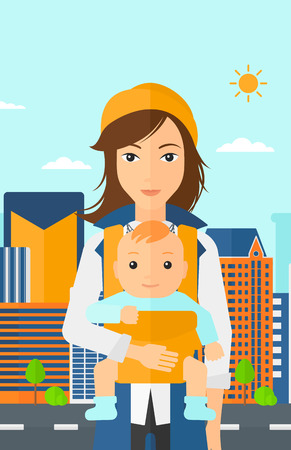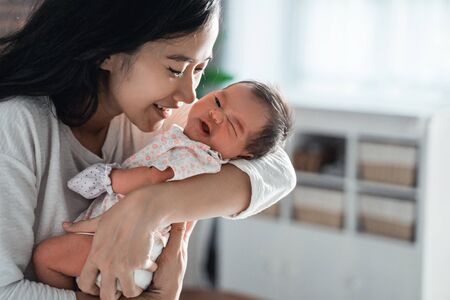1. Understanding the Basics of Babyproofing
Bringing a baby into your home is an exciting and life-changing experience. However, it also means that your living space needs to be as safe as possible for your little one. Babyproofing is essential because babies are naturally curious and love to explore their surroundings. Without proper precautions, everyday household items can pose serious risks.
Why Babyproofing Is Essential
Babies grow and develop quickly, and before you know it, they’ll be crawling, standing, and grabbing anything within reach. Common household objects such as electrical outlets, sharp corners, and even small decorations can become potential hazards. Babyproofing helps prevent accidents and provides peace of mind, allowing your child to explore safely.
When to Start Babyproofing
The best time to start babyproofing is before your baby becomes mobile. Many parents begin during pregnancy or shortly after birth to ensure everything is ready when their baby starts exploring. By the time your little one begins rolling over or crawling (usually around 6 months), your home should already be a safe environment.
How to Assess Potential Hazards
A great way to identify dangers in your home is by seeing things from your babys perspective. Get down on the floor and look around—what do you see? Any sharp edges, exposed wires, or unsecured furniture could be a potential hazard. Below is a simple checklist to help you assess safety risks:
| Area | Potential Hazard | Solution |
|---|---|---|
| Living Room | Sharp table edges | Add corner guards |
| Kitchen | Cabinets with cleaning supplies | Install childproof locks |
| Bathroom | Toilet access | Use toilet locks |
| Bedroom | Cords from blinds | Tie up or remove cords |
| Stairs | No barriers | Add baby gates at top and bottom |
| Electrical Outlets | Exposed sockets | Use outlet covers |
Final Thoughts on Getting Started
The key to effective babyproofing is staying one step ahead of your childs development. Start early, regularly reassess your home as your baby grows, and always stay vigilant about new potential dangers. Taking these precautions will create a safer environment where your little one can explore with confidence.
2. Room-by-Room Babyproofing Checklist
Creating a safe environment for your baby is essential, and the best way to do this is by babyproofing each room in your home. Below is a detailed checklist to help you make every area as safe as possible.
Nursery
Your babys nursery should be a cozy and secure space. Here are some key safety measures:
- Ensure the crib meets current safety standards with a firm mattress and no loose bedding.
- Anchor heavy furniture like dressers and bookshelves to the wall to prevent tipping.
- Keep cords from blinds or curtains out of reach to avoid strangulation hazards.
- Use outlet covers on all electrical outlets.
- Avoid placing the crib near windows, heaters, or lamps.
Living Room
The living room is where your baby will spend a lot of time playing and exploring. Keep it safe with these tips:
- Cushion sharp corners on coffee tables, TV stands, and other furniture.
- Secure TVs and heavy furniture to prevent tipping.
- Use outlet covers and keep cords hidden or secured.
- Ensure small objects, which can be choking hazards, are out of reach.
- If you have a fireplace, install a heat-resistant baby gate around it.
Kitchen
The kitchen poses multiple hazards for little ones. Follow these precautions:
- Install cabinet locks to keep cleaning supplies, knives, and other dangerous items out of reach.
- Use stove knob covers to prevent accidental burns.
- Avoid placing hot foods or liquids near counter edges where they can be pulled down.
- If possible, use back burners when cooking.
- Add a safety latch to the refrigerator and dishwasher doors.
Bathroom
The bathroom contains many potential dangers. Make it safer with these steps:
- Install toilet locks to prevent drowning risks.
- Store medications, razors, and cleaning products in locked cabinets or high shelves.
- Add non-slip mats in the bathtub to prevent falls.
- Set your water heater temperature to no more than 120°F (49°C) to avoid burns.
- Never leave your baby unattended in the bathtub, even for a second.
Stairs
If your home has stairs, securing them is crucial for preventing accidents:
- Install sturdy baby gates at both the top and bottom of staircases.
- Avoid using pressure-mounted gates at the top of stairs as they may not be secure enough.
- Keeps stairs free from toys or objects that could cause tripping.
- If possible, teach your child how to safely go up and down stairs under supervision.
Quick Babyproofing Checklist
| Room | Main Safety Measures |
|---|---|
| Nursery | No loose bedding, anchored furniture, cord safety, outlet covers |
| Living Room | Padded furniture edges, secured TV/furniture, hidden cords |
| Kitchen | Cabinet locks, stove knob covers, hot food/liquid precautions |
| Bathroom | Toilet locks, locked cabinets for meds/razors, non-slip mats |
| Stairs | Baby gates at top/bottom, no loose objects on stairs |
Taking these steps will help create a safer environment for your little one as they begin exploring their world. By addressing each room individually, you can ensure your home is well-prepared for your babys growing curiosity!

3. Essential Babyproofing Products and DIY Solutions
Babyproofing your home requires a combination of essential safety products and creative DIY solutions. While store-bought items offer convenience, budget-friendly alternatives can be just as effective in keeping your little one safe.
Must-Have Babyproofing Products
Investing in key babyproofing products helps prevent common household hazards. Below are some must-have items every parent should consider:
| Product | Description | Why Its Important |
|---|---|---|
| Baby Gates | Used to block off stairs, doorways, or restricted areas. | Prevents falls and keeps babies away from dangerous spaces. |
| Outlet Covers | Covers electrical outlets to stop babies from sticking fingers or objects inside. | Avoids potential electric shocks and injuries. |
| Cabinet Locks | Keeps cabinets and drawers securely closed. | Prevents access to hazardous substances like cleaning supplies and sharp objects. |
| Cushion Corner Guards | Padded protectors placed on sharp furniture edges. | Reduces the risk of head bumps and bruises. |
| Door Knob Covers | Makes it harder for toddlers to open doors leading to unsafe areas. | Keeps kids from wandering into rooms unsupervised. |
| Tub Spout Cover | A soft cover that fits over the bathtub spout. | Avoids head injuries during bath time. |
| Cordless Window Blinds | An alternative to blinds with cords, which pose a strangulation hazard. | Makes window areas safer for curious toddlers. |
Budget-Friendly DIY Alternatives
If youre looking for cost-effective ways to babyproof your home, try these simple DIY solutions:
Bungee Cords or Zip Ties for Cabinets
If you don’t have cabinet locks, loop a bungee cord or zip tie through adjacent handles to keep doors securely shut.
Tennis Balls for Furniture Corners
If you don’t have corner guards, cut a tennis ball in half and place it on sharp furniture edges to soften potential impact points.
Duct Tape Over Electrical Outlets
A temporary solution is placing duct tape over unused outlets until you can install proper outlet covers.
PVC Pipe for Door Stoppers
If doors tend to slam shut, cut a short piece of PVC pipe and place it around the edge of the door to prevent pinched fingers.
Sock Covers for Door Knobs
If your toddler can open doors easily, slip a sock over the doorknob and secure it with a rubber band to make turning more difficult.
A mix of store-bought babyproofing products and DIY hacks can help create a safe environment for your child without breaking the bank. By securing potential hazards, you can ensure peace of mind as your baby explores their surroundings safely.
4. Common Babyproofing Mistakes to Avoid
When babyproofing your home, it’s easy to overlook certain hazards. Many parents focus on the obvious dangers but miss some less noticeable risks that can still lead to accidents. Below are common babyproofing mistakes and how to avoid them.
Ignoring Small Choking Hazards
Babies love to explore with their mouths, making small objects a serious choking risk. Parents often forget about everyday items like coins, buttons, or even pet food.
How to Prevent This:
- Regularly check floors for small objects.
- Keep toys with small parts out of reach.
- Use a toilet paper roll test—if an item fits inside, its a choking hazard.
Not Securing Heavy Furniture
Toddlers love climbing, and unsecured furniture can easily tip over. Dressers, bookshelves, and TVs are common dangers.
How to Prevent This:
- Anchor heavy furniture to the wall using anti-tip straps.
- Mount flat-screen TVs instead of placing them on stands.
- Avoid placing tempting objects (toys, remotes) on high surfaces that encourage climbing.
Forgetting About Electrical Cords
Cords from lamps, chargers, and blinds pose a strangulation or electrocution risk. Babies might pull on them or get tangled.
How to Prevent This:
- Use cord shorteners or hide cords behind furniture.
- Avoid using long extension cords in areas where babies crawl.
- If you have window blinds with cords, switch to cordless options or use cord safety wraps.
Ineffective Cabinet Locks
Certain cabinet locks may not be strong enough, especially if your child is persistent. Some babies quickly figure out weak latches.
| Mistake | Solution |
|---|---|
| Using flimsy adhesive locks | Select magnetic or mechanical locks for stronger security. |
| Latching only lower cabinets | Add locks to upper cabinets too—curious toddlers love climbing! |
| Narrow focus on kitchen cabinets | Secure bathroom and laundry room cabinets as well. |
Lack of Stair Gates
If you have stairs in your home, failing to install proper gates can be a significant safety risk. Babies move fast and can reach staircases unexpectedly.
How to Prevent This:
- Use hardware-mounted gates at both the top and bottom of stairs for extra security.
- Avoid pressure-mounted gates at the top of stairs—they can be pushed over.
- Make sure gates are always closed when not in use.
Poor Bathroom Safety Measures
The bathroom is one of the most dangerous places for babies due to water risks and slippery surfaces. Many parents forget about hidden hazards here.
How to Prevent This:
- Add non-slip mats inside and outside the bathtub.
- Keeps toilet lids closed with childproof locks.
- Never leave standing water in tubs or sinks unattended.
Avoiding these common babyproofing mistakes will help create a safer environment for your little one. By staying proactive and double-checking potential hazards, you can significantly reduce the risk of household accidents.
5. Adapting Babyproofing as Your Child Grows
As your little one grows, their curiosity and mobility increase. What worked when they were just crawling might not be enough once they start walking and climbing. It’s essential to update your babyproofing efforts to match their new abilities. Below are key areas to adjust as your child moves through different stages.
Securing Furniture and Heavy Objects
Once your baby starts pulling up and cruising, furniture becomes a potential hazard. Unsecured items can tip over, leading to serious injuries. Take these steps to ensure safety:
- Anchor bookshelves, dressers, and TVs to the wall using anti-tip straps.
- Avoid placing heavy objects on top of furniture that children can reach.
- Secure large mirrors and picture frames to the wall instead of leaning them.
Updating Safety Gates
Crawlers need gates to block off stairs and unsafe rooms, but as they grow into toddlers, they may try to climb over them. Choose the right gate for each stage:
| Stage | Recommended Gate Type |
|---|---|
| Crawling | Pressure-mounted gates for doorways, hardware-mounted gates for stairs. |
| Toddler (Walking & Climbing) | Tall, hardware-mounted gates with vertical slats to prevent climbing. |
Kitchens and Bathrooms: New Precautions Needed
Your child’s increased mobility means they can now reach countertops, open drawers, and explore cabinets. Prevent accidents by:
- Installing stove knob covers to prevent accidental turning.
- Using cabinet locks on all drawers containing sharp or hazardous items.
- Keeping cleaning supplies, medications, and toiletries in locked cabinets or out of reach.
Dangers from Climbing
Toddlers love to climb, which increases the risk of falls. Make sure your home is ready for this stage:
- Avoid placing furniture near windows where kids might climb up.
- Add window guards or stops to prevent accidental falls.
- If you have bunk beds or high furniture, make sure kids cannot access them without supervision.
Cords and Electrical Safety
Your child will soon be able to grab dangling cords and unplug devices. Keep these risks in check:
- Tie up blind cords and keep them out of reach to prevent strangulation hazards.
- Cover unused electrical outlets with safety plugs or sliding covers.
- Avoid using extension cords in areas where children play frequently.
A Continuous Process
Your child’s abilities will change quickly, so babyproofing should be an ongoing effort. Regularly assess your home for new dangers as they become more mobile and curious. By staying proactive, you can create a safe environment that grows with your child.


